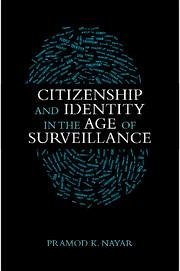
Surveillance in Action
Technologies for Civilian, Military and Cyber Surveillance
Herausgegeben: Karampelas, Panagiotis; Bourlai, Thirimachos

PAYBACK Punkte
65 °P sammeln!
This book addresses surveillance in action-related applications, and presents novel research on military, civil and cyber surveillance from an international team of experts. The first part of the book, Surveillance of Human Features, reviews surveillance systems that use biometric technologies. It discusses various novel approaches to areas including gait recognition, face-based physiology-assisted recognition, face recognition in the visible and infrared bands, and cross-spectral iris recognition.The second part of the book, Surveillance for Security and Defense, discusses the ethical issues ...
This book addresses surveillance in action-related applications, and presents novel research on military, civil and cyber surveillance from an international team of experts. The first part of the book, Surveillance of Human Features, reviews surveillance systems that use biometric technologies. It discusses various novel approaches to areas including gait recognition, face-based physiology-assisted recognition, face recognition in the visible and infrared bands, and cross-spectral iris recognition.
The second part of the book, Surveillance for Security and Defense, discusses the ethical issues raised by the use of surveillance systems in the name of combatting terrorism and ensuring security. It presents different generations of satellite surveillance systems and discusses the requirements for real-time satellite surveillance in military contexts. In addition, it explores the new standards of surveillance using unmanned air vehicles and drones, proposes surveillance techniquesfor detecting stealth aircrafts and drones, and highlights key techniques for maritime border surveillance, bio-warfare and bio-terrorism detection.
The last part of the book, Cyber Surveillance, provides a review of data hiding techniques that are used to hinder electronic surveillance. It subsequently presents methods for collecting and analyzing information from social media sites and discusses techniques for detecting internal and external threats posed by various individuals (such as spammers, cyber-criminals, suspicious users or extremists in general). The book concludes by examining how high-performance computing environments can be exploited by malicious users, and what surveillance methods need to be put in place to protect these valuable infrastructures.
The book is primarily intended for military and law enforcement personnel who use surveillance-related technologies, as well as researchers, Master's and Ph.D. students who are interested in learning about the latest advances in military, civilian and cyber surveillance.
The second part of the book, Surveillance for Security and Defense, discusses the ethical issues raised by the use of surveillance systems in the name of combatting terrorism and ensuring security. It presents different generations of satellite surveillance systems and discusses the requirements for real-time satellite surveillance in military contexts. In addition, it explores the new standards of surveillance using unmanned air vehicles and drones, proposes surveillance techniquesfor detecting stealth aircrafts and drones, and highlights key techniques for maritime border surveillance, bio-warfare and bio-terrorism detection.
The last part of the book, Cyber Surveillance, provides a review of data hiding techniques that are used to hinder electronic surveillance. It subsequently presents methods for collecting and analyzing information from social media sites and discusses techniques for detecting internal and external threats posed by various individuals (such as spammers, cyber-criminals, suspicious users or extremists in general). The book concludes by examining how high-performance computing environments can be exploited by malicious users, and what surveillance methods need to be put in place to protect these valuable infrastructures.
The book is primarily intended for military and law enforcement personnel who use surveillance-related technologies, as well as researchers, Master's and Ph.D. students who are interested in learning about the latest advances in military, civilian and cyber surveillance.












